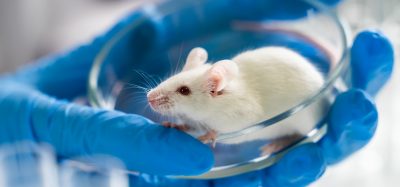Explaining sex differences in adipose insulin resistance
Posted: 14 May 2024 | Drug Target Review | No comments yet
Heightened insulin resistance in obese men may elucidate the higher prevalence of type 2 diabetes among these individuals.

New findings by researchers at Karolinska University, being presented at the European Congress on Obesity (ECO) in Venice, Italy from 12th to15th May, could explain why type 2 diabetes (T2D) is more common in men than in women.
Lead researcher Dr Daniel P Andersson, from the Department of Endocrinology at Karolinska University Hospital Huddinge, said: “Previous studies have shown that men develop type 2 diabetes (TD2) at a younger age and at a lower weight than women and, overall, men appear to be at higher risk of the condition…One reason for this may be differences in how the sexes’ adipose tissue responds to insulin.”
He further commented: “Adipose tissue is the main organ for the storage of excess energy and this is done in lipids called triglycerides that consist of free fatty acids. When there is excess energy, insulin decreases the breakdown of triglycerides (lipolysis) and the release of free fatty acids to the blood and increases the storage of energy as triglycerides (lipogenesis) in fat cells…In insulin resistance, fat cells are less sensitive to insulin and so both of these processes are impaired. This can lead to more fat circulating in the bloodstream, which raises the risk of T2D.”
Therefore, if insulin resistance of adipose cells is more pronounced in men than in women, this could be why T2D is more common in men than women.
Adipose insulin resistance index
The team measured the adipose insulin resistance index (AdipoIR), the measure of insulin sensitivity of fat cells, with higher values indicating more resistance to insulin, to investigate this hypothesis, in 2,344 women and 787 men. These individuals had an average age of 44 years and an average BMI of 35 kg/m2.
It was discovered that men had higher AdipoIR values than women but only when obesity was present. This was observed in both physically active and sedentary people, in those with and without cardiometabolic disease and in people using nicotine and not.
Then, in a subgroup of 259 women and 54 men living with obesity, the researchers took biopsies from the adipose tissue to study the effect of insulin on isolated fat cells. This demonstrated clear differences between the sexes. Compared to women, a 10-fold higher concentration of insulin was needed in men to block the breakdown of triglycerides to fatty acids. The blockage was also less effective in men. Despite this, the storage capacity of the fat cells was similar for both sexes.
Dr Andersson clarified: “When looking at sex differences, we found that men who were living with obesity had increased adipose insulin resistance and higher levels of free fatty acids in the blood…The differences seen between men and women were mainly related to decreased ability of insulin to block the breakdown of fatty acids in fat cells from men rather than sex differences in storage capacity.”
The liver, muscle and pancreas are affected by fatty acids in the bloodstream, which can result in more local insulin resistance in these organs. This forms a vicious circle that can lead to the development of T2D.
This study was published in the International Journal of Obesity.
Related topics
Disease Research
Related conditions
Obesity, Type-2 diabetes
Related organisations
Karolinska University
Related people
Dr Daniel P Andersson (Karolinska University)






